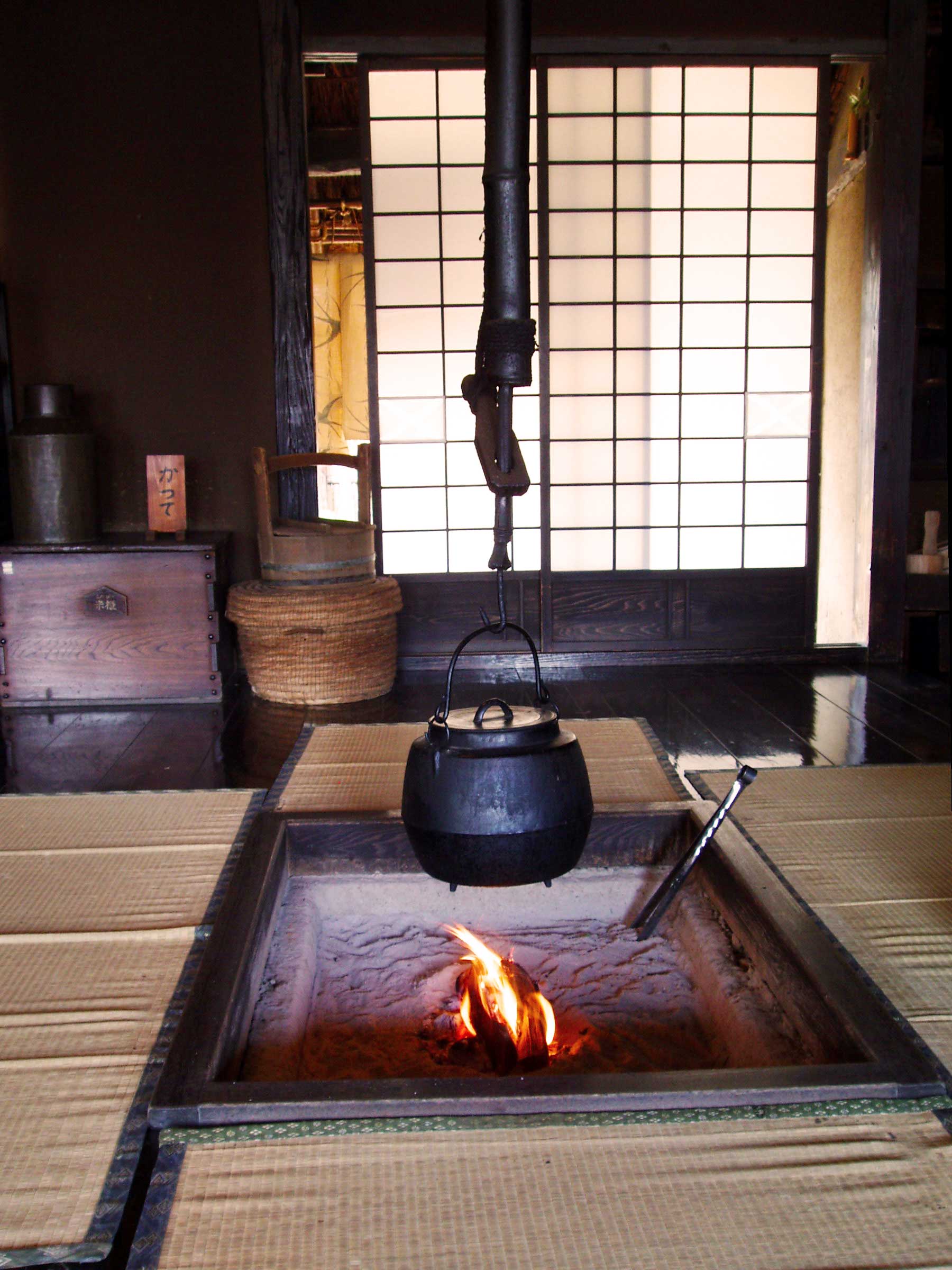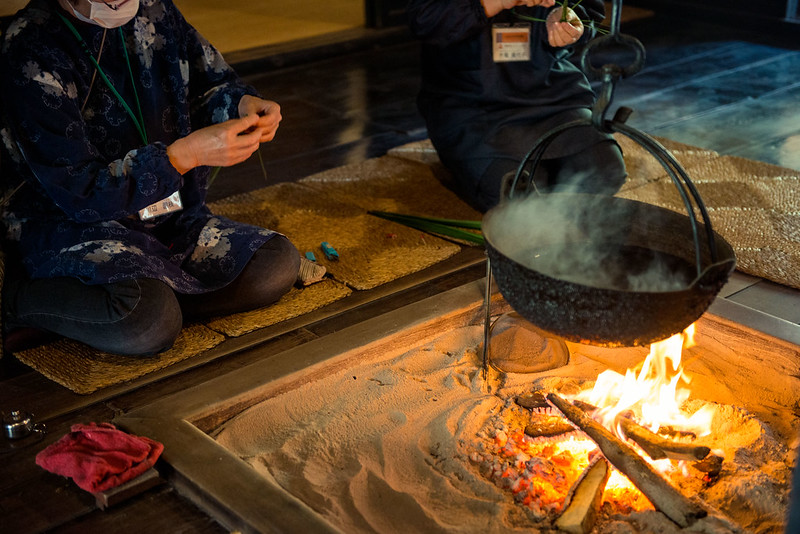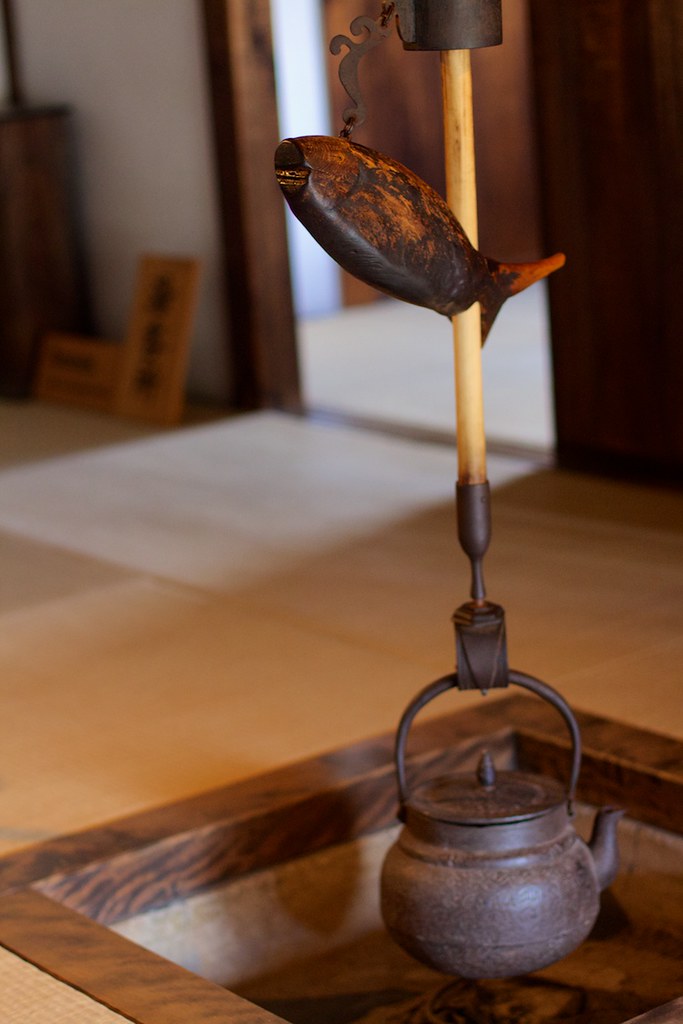囲炉裏
Irori
Irori (囲炉裏 or 居炉裏) is an open, sunken hearth in traditional Japanese buildings. They are used for cooking, heating, lighting, drying clothing, and even improved durability of homes.
Irori are typically square-shaped pits in the floor. Construction and size depends on what type it is and what kind of building it belongs to.
— Functions
Cooking: For cooking, there were tripods that you could place pots on, or from the celling, a pole hung down with an adjustable pothook called jizaikagi (自在鈎). At the end of the jizaikagi, one could attach a pot for cooking. Around the fire, one could put skewered fish standing up into the ash to roast.
Heating: The irori was often constructed in the center of the room of traditional homes to provide heat to the family. The family would gather around the fire to stay warm during the cold winter months.
Lighting: As there was no electricity, the fire was used to light the house.
Drying Clothes: When cloths became wet, people would lay them out next to the fire to dry.
Improving Durability: Japan is generally a very wet country. Because of this, the wood in traditional houses would trap moisture. The heat of the fire in the irori dried out the moisture trapped in the wood. This helps prevent the wood from rotting. Irori also proved to be a good bug repellent.
— Types of Irori
There are two main types:
The more simple of the two is a pit directly in the ground, which was filled with sand and ash and surrounded with stone and wood. This type could be found in prehistoric homes and the homes of the poorer classes (esp. minka of the Edo period.
The other type was constructed into the raised wooden flooring, takayuka (高床), and surrounded with wood (and occasionally stone). Under the building, a mound of stone and earth was built up to reach the raised flooring, constructing the base of the hearth. The fire pit was then made in the center of this and lined with a plaster called shikkui (漆喰).
— History
By the Heian period, irori were already in use in houses of the upper class. At that time, they were called jihiro (地火炉). There were also used in shoin-zukuri styled homes. They were found in kitchens, tea ceremony rooms, and tea houses.
Nowadays, it is extremely hard to find an irori, as they have mostly been fazed out. You can find them in the occasional inn or museum, however.
The common class homes, Minka, irori were found in the kitchen and in the center of the living room. Ones found in the living room were the center point for the family's everyday life and where informal visitors were entertained.
Irori found in Minka were a feature all across the country. In the Tōhoku region, you could even find two in one house. However, in the Kansai region, by the mid-Edo period, there were virtually exitinct near any major urban areas.
— Names
Irori can have different names and pronunciations depending on where in Japan you are. Some of the more common ones are yururi (ゆるり), yurui (ゆるい), irui (いるい), yuri (ゆり), iri (いり), ennaka (えんなか), hinata (ひなた), hitakijiro (火焚き地炉), hijiro (火地炉).


